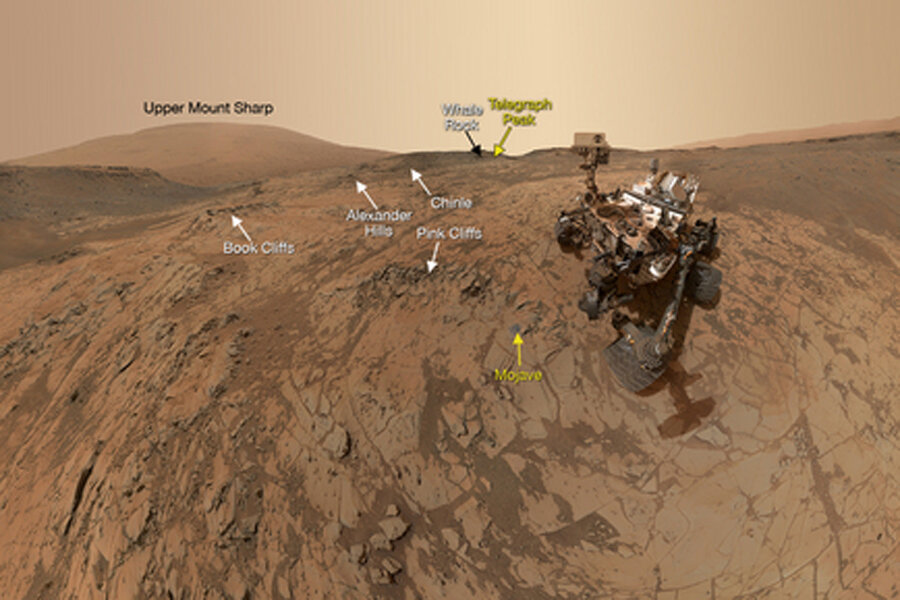Mars rover Curiosity snaps cosmic selfie
Loading...
A new selfie taken by NASA's Mars rover Curiosity shows just where the six-wheeled robot has been working for the last five months.
Curiosity's latest Mars photo, which was released today (Feb. 24), is a composite of dozens of images taken in late January by the Mars Hand Lens Imager (MAHLI) on Curiosity's robotic arm. The mosaic provides a great view of the Pahrump Hills outcrop at the base of the Red Planet's 3.4-mile-high (5.5 kilometers) Mount Sharp.
The 1-ton Curiosity rover has been studying Pahrump Hills terrain since September 2014 and has performed two sample-collecting drilling operations there, on rocks dubbed Confidence Hills and Mojave 2. Analysis of the Mojave 2 sample is ongoing. (Curiosity took the selfie at the Mojave 2 drill site.)
The rover's handlers plan to drill another Pahrump Hills rock, called Telegraph Peak, which is also visible in the new image, NASA officials said.
Curiosity landed inside the 96-mile-wide (154 km) Gale Crater in August 2012 on a $2.5-billion mission to determine if Mars has ever been capable of supporting microbial life. That primary goal has already been accomplished: Curiosity's observations have revealed that Gale Crater contained a habitable lake-and-stream system billions of years ago.
The rover is currently engaged in a systematic exploration of Mount Sharp's foothills. Curiosity team members want the car-size robot to climb up the mountain's lower reaches, reading in the rocks a history of Mars' changing environmental conditions over time.
The new selfie does not show all of Curiosity; the rover's 7-foot-long (2.1 m) robotic arm doesn't make it into the shot.
"Wrist motions and turret rotations on the arm allowed MAHLI to acquire the mosaic's component images. The arm was positioned out of the shot in the images, or portions of images, that were used in this mosaic," NASA officials wrote in an image description. "This process was used previously in acquiring and assembling Curiosity self-portraits taken at sample-collection sites Rock Nest, John Klein and Windjana."
Follow Mike Wall on Twitter @michaeldwall and Google+. Follow us @Spacedotcom, Facebook or Google+. Originally published on Space.com.
- A 'Curiosity' Quiz: How Well Do You Know NASA's Newest Mars Rover?
- Curiosity's 'Road' On Mars: Where It's Been and Where It's Going | Video
- 7 Biggest Mysteries of Mars
Copyright 2015 SPACE.com, a Purch company. All rights reserved. This material may not be published, broadcast, rewritten or redistributed.





